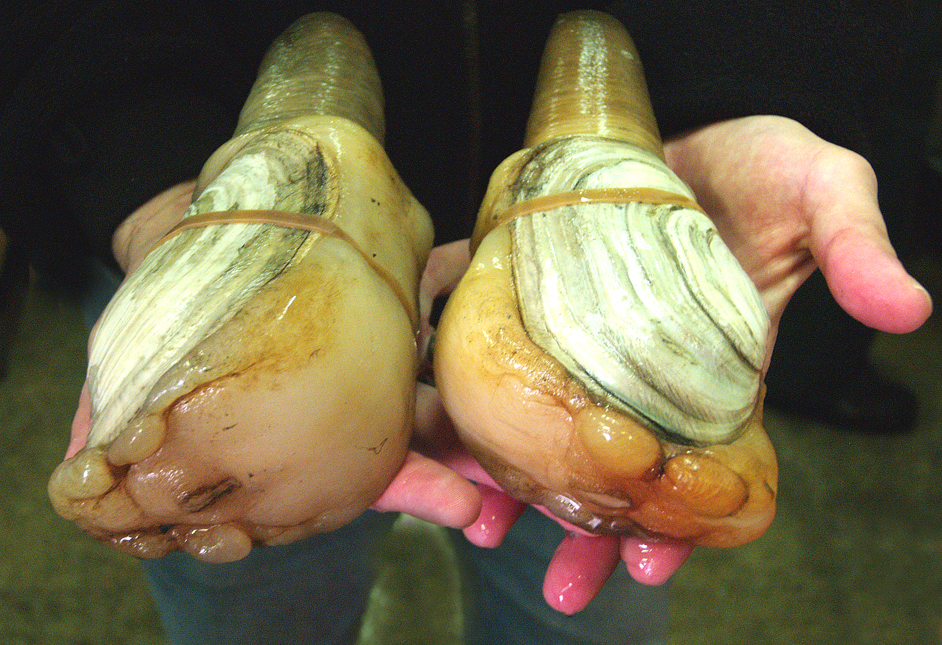
Environment and health officials in the U.S. say they are puzzled by China’s decision to ban shellfish harvested from Northern California to Alaska. State officials say their records don’t show the same unsafe toxin levels that were detected by a lab in China.
China says it found toxins in two shipments of geoducks. These giant clams harvested in Puget Sound and Alaska can go for $150 a pound. Washington’s shellfish industry overall is worth $270 million, and China is the top export market.
China reported that the shipments came from Ketchikan, Alaska, and Renton, Washington, in early October.
Rick Porso, who manages shellfish licensing with the Washington Department of Health, is handling the investigation. He said his agency has pulled two months of records and found no sign that the clams in question had unsafe toxin levels.
The toxin identified by the Chinese lab causes a sickness called paralytic shellfish poisoning, or PSP.
“The product appears to have come from open growing areas in good standing that are heavily monitored with low PSP values,” Porso said. “It just doesn’t match up.”
Alaska also routinely tests for PSP before allowing harvest, according to Kimberly Stryker, manager of the state’s Food Safety & Sanitation Program. She said the little information provided by China about its tests has hindered Alaska analysts’ own search for the source of the toxins.
“We’re in the midst of doing our investigation right now to try and track down potentially whether the lot actually did originate from Alaska and if so what location in came from,” Stryker said. “But with very little information we’re receiving it’s been difficult.”
U.S. seafood inspectors have asked China for more specifics about the tests that led to the seafood ban, according to Tim Hansen, Director of the Seafood Inspection Program at the National Oceanic and Atmospheric Administration.
“How many geoducks did you use for your sample? Did you use the whole animal or just the meat? Did you include the gutball, which is where the PSP would be? Can you explain your extraction methods? This sort of thing,” Hansen said.
Testing the whole geoduck, Hansen explained, can detect unsafe toxin levels because parts of the geoduck that aren’t eaten, like the gut, store most of the toxin.
The reasons for the tests that led to the ban are not yet known. State officials, NOAA and the U.S. Food and Drug Administration all said they were not aware of anyone who became ill because of the shipments.
China is the end point for a third of the $500 million U.S. shellfish industry. Hansen said China has increased monitoring for several of its seafood imports, including a closer inspections of East Coast lobster for levels cadmium as well Washington’s oysters for other toxins.
China has not said when it will lift the ban on West Coast shellfish.
